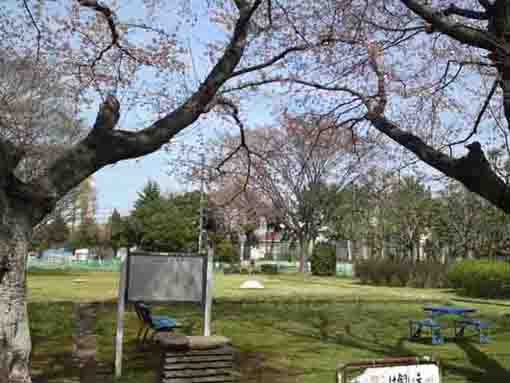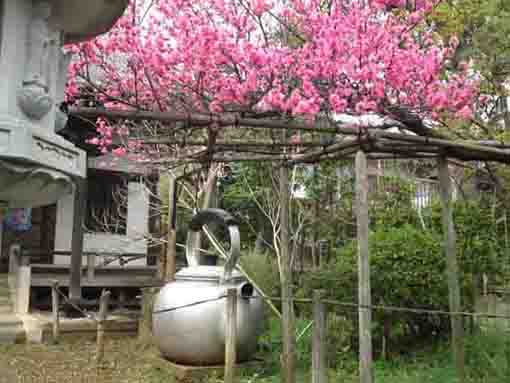Nakayama is in between Narita And Haneda International Airport
<クッキーについての同意並び欧州居住者向けプライバシーポリシー>
中山・下総・散歩道
The Historic Site Shimousa Kokubunji Temple
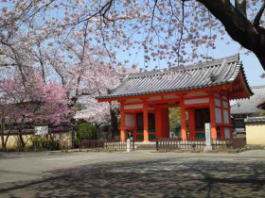
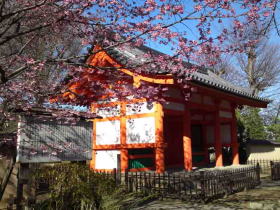
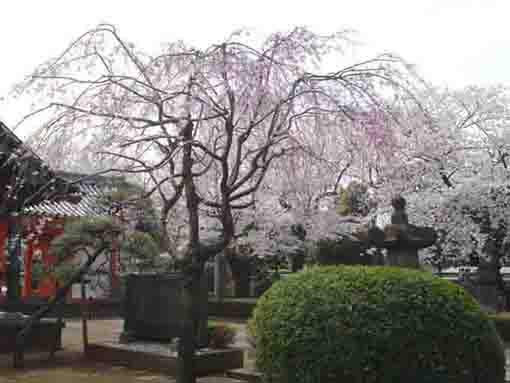
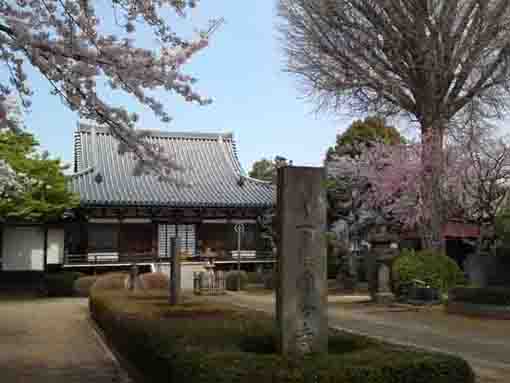
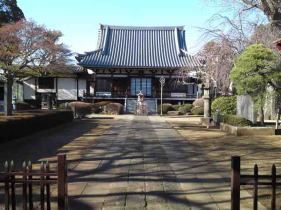
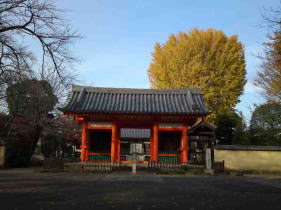
Kokubunsan Kokubunji Temple in Kokubun, Ichikawa city, Chiba prefecture now belongs to Shingon sect Buzanha. According a legend, Kokubunji Temple was founded by Gyoki Bosatsu, a great priest in Buddhism in Nara period, and it was called 'Konkomyoji Temple' until mid-Meiji era. So Kokubunji Temple is the remains of Shimousa Kokubunji Temple designated as the historical site by the National Government. The Kokubunsan Kokubunji Temple is succeeded the history since it was founded and worshipped by supporters and regional people, so the temple has reconstructed several times by them even though it has got fired, then it stands at Kokubun now. In spring, many cherry blossoms bloom beautifully and leaves on the large gingko tree are sparklingly changed color in fall. Besides it is one of the Seven Deities of Good Fortune (shichifukujin) in Ichikawa city.
Why don't you visit Kokubunji Temple in Ichikawa city?
The Remains Of Shimousa Kokubunji Temple
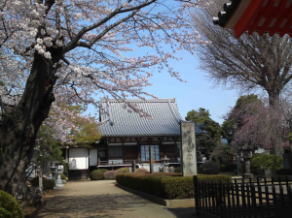
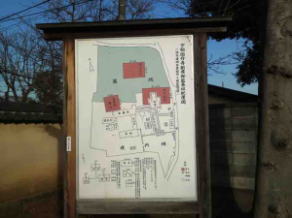
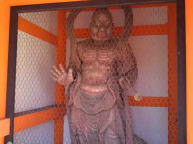
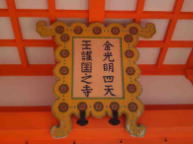
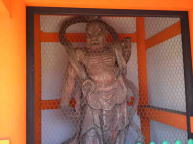
The Cultural Property Designated By The Government Of The Remains Of Shimousa Kokubunji Temple
Shimousa Kokubunji Temple was founded in 741 by the Imperial Command by the Emperor Shomu, he commanded to build a temple named Konkomyo Gokoku no Terain a province throughout Japan to keep people's lives peacefully, Shimousa Kokubunji Temple was the remains of one of those temples. The old temple was built on the almost same area of Kokubunji Temple now, and the arrangement of buildings in the temple at the first time was called the Horyuji Style, the kondo hall, the pagoda and kodo hall were built as similar to Horyuji Temple in Nara.Because the provincial government was in Konodai, Ichikawa city, Kokubun in Ichikawa city was chose where the temple by the Imperial Command could build on. The estimated position of Shimousa Kokubunji Temple is about 850m east from the estimated position of the government, and Kokubunniji Temple, a convent, was built in the Kokubunniji Ato Park 350m northwest from the temple. The lands of temples were chose to be conforming to the Imperial Command to stand for long. According to Ichikawa no Mukashibanashi (the legends in Ichikawa city), Gyoki Bosatsu decided the areas to build them as they were adequate lands for the command, and he carved a statue of Yakushi and dedicated it in the Temple. There were no records of the date of the construction, but it could be built in Nara period.
Kokubunji Temple now does not preserve any buildings recalling the flavor of Nara period since it has got fired several times. The archaeological researches from 1965 to 1966 revealed the site of the main hall, pagoda and lecture hall in the Horyuji Style arrangement of buildings. Under the present main hall, there are foundation stones of the Kondo hall measuring 31.5m from east to west and 19m from north to south excavated. And 40m from the center of the foundation stones to northwest, the foundation stones of Kodo hall measuring 26m from east to west and 18m from north to south found under the tombs. And also 39m from the center of the foundation stones of the Kondo to west, there are the foundation stones of pagoda 18m square. And the excavation research from 1989 to 1993 found the range of the temple measuring 300m from east to west and 350m from north to south and revealed the town planning and the site for labors to work at the temple.
A remain of Noborigama Kiln that burnt tiles to build the roof of Kokubunji Temple was discovered near the temple. And the tiles were decorated with Hosoge pattern one of the popular styles from China at Nara period.
Original buildings in Kokubunji Temples have not existed since they were destroyed and burnt down by several battles and disasters since the Warring States Period.
According to Edo Meisho Zue, Katsushikashi and Katsushikashiryaku, the tower gate built in Nara period, the Yakushido dedicating the statue of Yakushi Nyora curved by Gyoki, the Shakado preserving the statue of Shaka Nyorai, Taishakuten and Bonteno in it, the Kodo and the Main Hall stood in the site, and it remained a flavor of the original landscapes until it got fired in 1891. Though it has got several disasters, Kokubunsan Kokubunji Temple remains 1300 years of its long history by its faithful supporters and people living around. The present main hall and the Nandaimon gate were built in Showa era.
参考
国分山国分寺南大門案内板
史跡国分寺案内板
市川市ホームページ
改訂新版「市川のむかし話」
新訂「江戸名所図会6」ちくま学芸文庫
ウィッキペディア
房総叢書 : 紀元二千六百年記念. 第8卷葛飾紀
房総叢書 : 紀元二千六百年記念. 第6卷葛飾誌略
Bishamonten and Shichifukujin in Ichikawa city
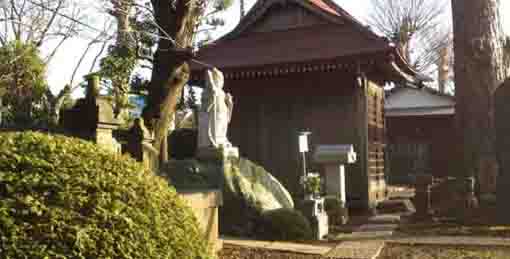
The Statue of Bishamonten(1st of Shichifukujin in Ichikawa city)
Bishimonten / Vaishravana; the God of Treasure and War
Bishamonten is one of the Seven Deities of Good Fortune in Japan, so he is a very popular god. Bishamonten is a guardian deity called 'Vaisravana' in Sanskrit, and Kubera in Hinduism. Bishamonten is only a god in Shichifukujin who looks like a samurai Busho. His body is yellow, shows anger, wears armors, puts a treasure club in his right hand, puts a pagoda in his left hand and treads on a devil in general. He is one of the Four Devas so the god has another name 'Tamonten' in Buddhism. He becomes the god of treasure and fortune, and lives in the north of Mt.Sumeru (Shumisen) and belongs to Taishakuten to protect the north with Yasha and Rasetsu. Sometimes, he is called Seziten as Bishamonten brings treasures to people. Moreover, Bishamonten is one of the Twelve Devas in esoteric Buddhism. Bishamonten is worshipped as a god of treasure.The statue of Tamonten in the Kondo Hall in Horyuji Temple in Nara is the oldest one, and one in the main hall in Kuramadera Temple in Kyoto and Sekkeiji Temple in Kochi prefecture are famous.
Shichifukujin (the Seven Dieties of Good Fortune) In Ichikawa City
- 1st Bishamonten in Kokubunji Temple (3-20-1 Kokubun)
- 2nd Ebisuten in Shoganji Temple (4-12-3 Miyakubo)
- 3rd Daikokuten in Honshoji Temple (2-919-1 Onomachi)
- 4th Bishamonten in Jokoji Temple (3-1917 Onomachi)
- 5th Fuku Roku Ju and Ju Rojin in Myoshoji Temple (4-2122 Kitakata-cho)
- 6th Bezaiten in Okunoin of Hokekyoji Temple (2-21-1 Wakamiya)
- 7th Hoteison in Anyoji Temple (2-16-35 Koya)
- 8th All Seven Gods in One in Myooji Temple (2-18 Hongyotoku)
参考
国分山国分寺毘沙門天案内板
大辞泉
明鏡国語辞典
ブリタニカ国際大百科事典
市川市ホームページ
Kokubunji Temple and Gyoki
Kokubunji and Kokubunniji Temple
Kokubunji Temples, the provincial temples, and Kokubunniji Temples were established by the Imperial Court in Nara Period. In 741, the Emperor Shomu issued an Imperial edict of building Kokubunji Temples to control the nation peacefully by Buddhism. The Emperor Shomu planned to build the temples for keeping the nation tranquil and a huge harvest every year by Buddhist prayers and ceremonies.Todaiji Temple in Nara was the head temple of the Kokubunji Temples in every provinces, and Hokkeji Temple in Nara was the head temple of the Kokubunniji Temples. Kokubunji Temples were legally named Konkomyo Shitenno no Tera and Kokubunniji Temples were named Hokke Metsuzai no Tera. Kokubunji Temples could be built near the privincial capitals and as close as to be able to hear the sound of bells ringing from Kokubunniji Temples. They dedicated the statues of Shakanyorai (Shakyamuni Tathabata), the seven-stories pagodas could be built in the sites of the Kokubunji Temples to preserve Konkomyosaishookyo (the Mahayana Sutras) in them, the Kokubunniji Temples could keep the Lotus Sutra and Saishookyo written by the Emperor Shomu with gold ink were kept both Kokubunji and Kokubunniji Temples. They all were established in the Imperial Edict, and also they were ruled that 20 priests always works at a Kokubunji temple and 10 priestesses at a Kokubunniji Temple. Kokubunji Temples and Kokubunniji Temples were supported by the Imperial Court and they took on the responsibility to manage priests and priestesses in each provinces.
Late Heian Period, most of Kokubunji and Kokubunniji Temples were eliminated as the Imperial Court had lost the power and could not support them. Most Kokubunji Temples now existing belong to different sects of Buddhism from that of them and seldom remain the original flavor of them in Nara period. And the most eliminated Kokubunji and Kokubunniji Temples are preserved as remains in some historical sites or parks after they were archaeologically excavated and researched.
Now, Tobunji and Tobonniji Temples were built in Iki and Tsushima Island.
参考
デジタル大辞泉
明鏡国語辞典
ブリタニカ国際大百科事典
ウィッキペディア
Gyoki Bosatsu
Gyoki was a priest belonging to Hosso Sect in Nara Period, he was born in 668 ni Kawachi province (Osaka) and passed away in 749 in Nara. His family name was Koshi.When he was fifteen years old, he became a priest and learned the studies in Hosso sects from Gien at Yakushiji Temple in Nara, so he outsandingly understood several difficult sutras very fast. And he completed the meditative concentration in woods.
After death of his mother, he traveled throughout Japan to train himself and help others' to train themselves, thousands of people followed him.
Gyoki took his followers to built free inns, roads, banks, bridges, temples and some social contributions with people such as Gotomari port at Setonaikai Sea and 49 temples in Kinai are famous. However, the Imperial Court forbid his early activities by the Imperial Edict since he violated the law of priests and preiestesses that he had misled people. But he had not got any definite punishments. Gyoki changed his incantation soft, and he started preaching in the temples instead of preaching at roads, so he responded flexibly to the oppressions by the Court.
Even though the Imperial Court oppresssed several times, Gyoki and his followers grew larger and larger, the court could not ignore their activities. In 731, the Court gave them permission that over 61 years old man and over 55 years old woman who follwed Gyoki could be priests and priestesses. In 743, Gyoki was given the title of Daisojo (the head priest), so he was the first head priest in Japan and he took the highest rank in religious society in Japan. Moreover the Emperor Shomu became a devout in him. He helped the Emperor to build Todaiji Temple in Nara and Kokubunji Temples throughout Japan and he traveled around to collect many donations to build the Great Buddha Hall in Todaiji Temple.
After he gave Bosatsukai to the Emperor Shomu and his family, Gyoki died at 80 (some said 81 or 82) at Sugawaradera Temple 3 years before the completion of th Great Buddha in Nara in 749. He was counted as one of the four holy priests of Todaiji Temple. The Imperial Court gave aposthumous title 'Gyoki Daitoku' in 738. And also people at that time called him 'Gyoki Bosatsu' with their faith.
There are some miracle stories of Gyoki, they are on Daisojosharibinki, Shoku Nihongi, Nihon Reiiki and Gyoki Nenpu. The pottery named Gyokiyaki, the tiled roof named Gyokibuki are famous. And it is also famous that Gyoki was the first man of drwaning the coplete map of Japan called Gyokizu.
参考
デジタル大辞泉
明鏡国語辞典
ブリタニカ国際大百科事典
日本大百科全書(ニッポニカ)
ウィッキペディア
The Location and Access to Kokubunsan Kokubunji Temple
Kokubunsan Kokubunji Temple
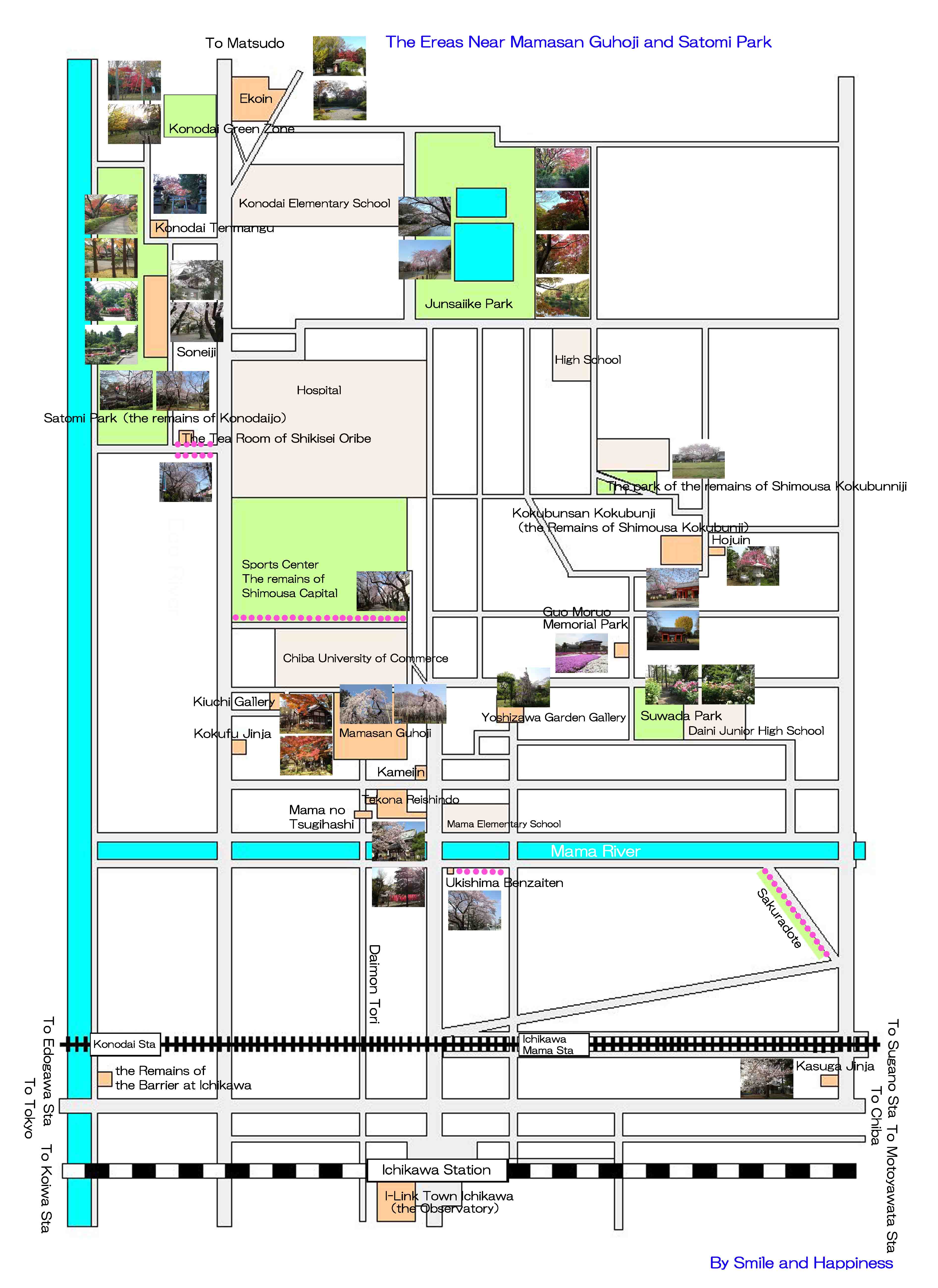
The map of Kokubunsan Kokubuji
PDF of the map around Mamasan Guhoji and Satomi Park- Kokubunsan Kokubunji Temple has great accessibilities from both Narita and Haneda International Airport.
- From Narita International Airport, take Keisei-line and get off Ichikawamama Sta , take minimally 45 minutes from Narita Airport. And also take JR Sobu-express line, transfer the line at Funabashi to Keisei-line, get off Ichikawamama Sta.
- From Haneda International Airport, take Keikyu-line bound to Narita, and get off Ichikawamama Sta.
- Take 25 minute walk from Ichikawamama Sta.
- 3-20-1 Kokubun, Ichikawa-shi, Chiba-ken
A Walk On The Area Around Shimousa Kokubunji Temple
Landmarks near Shimousa Kokubunji Temple
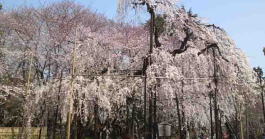
Mamasan Guho-ji Temple
It is famous for the beautiful cherry blossoms and the flamed colored autumnal leaves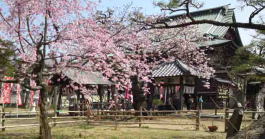
Monument and Shrine of Tekona
Tekona Reishindo Shrine has loved and described in many poems for thousands years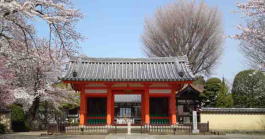
Shimousa Kokubunji Temple
Kokubunji in Ichikawa city is designated as the histric site by the government.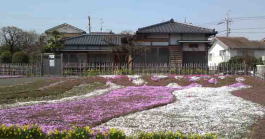
Guo Moruo Memorial Park
Guo Moruo Memorial Park gives an illusion to us to stray into a town in early Showa era.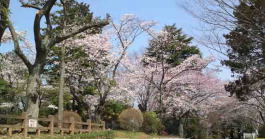
Suwada Park
Suwada Ruins and the stone tablet inscribed by Guo Moruo are in the park. Cherry blossoms and roses bloom in spring.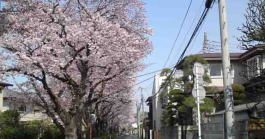
Cherry Blossom Causeway Park(A Path Of Literature)and Ukishima Benzaiten Shrine
The park extending 400m long along the cherry trees.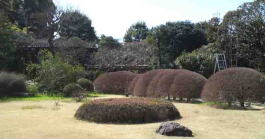
Yoshizawa Garden Gallery
There are many seasonal flowers brightly blooming in the garden.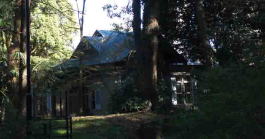
Kiuchi Gallery
A Western-style Building like a hat in fairy tales in woods.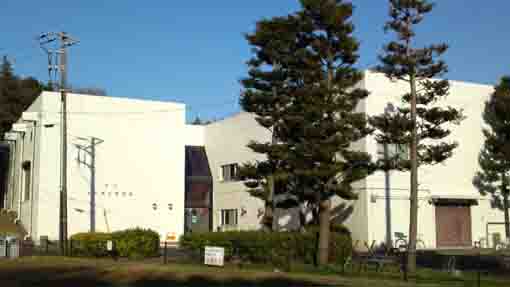
History Museum and Museum of Antiquities of Ichikawa-shi, and Horinouchi Shell Mound
The museums introduce history of the areas around Ichikawa.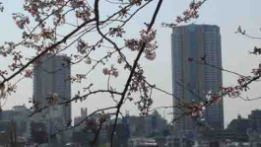
The Observatory on I-link Town Ichikawa
It commands a panoramic view of Mt.Fuji behind the skyscrapers in Tokyo.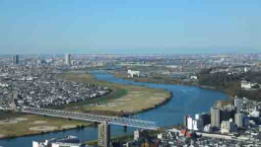
A Walk Along Edogawa River
The areas along the river have many noted spots that people could enjoy history and culture.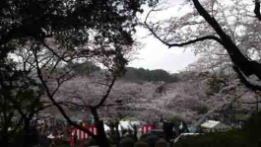
A Walk Around Satomi Park
The park is the noted scenic spot to see cherry blossoms, roses and colored leaves.- 広告 Advertisement -
